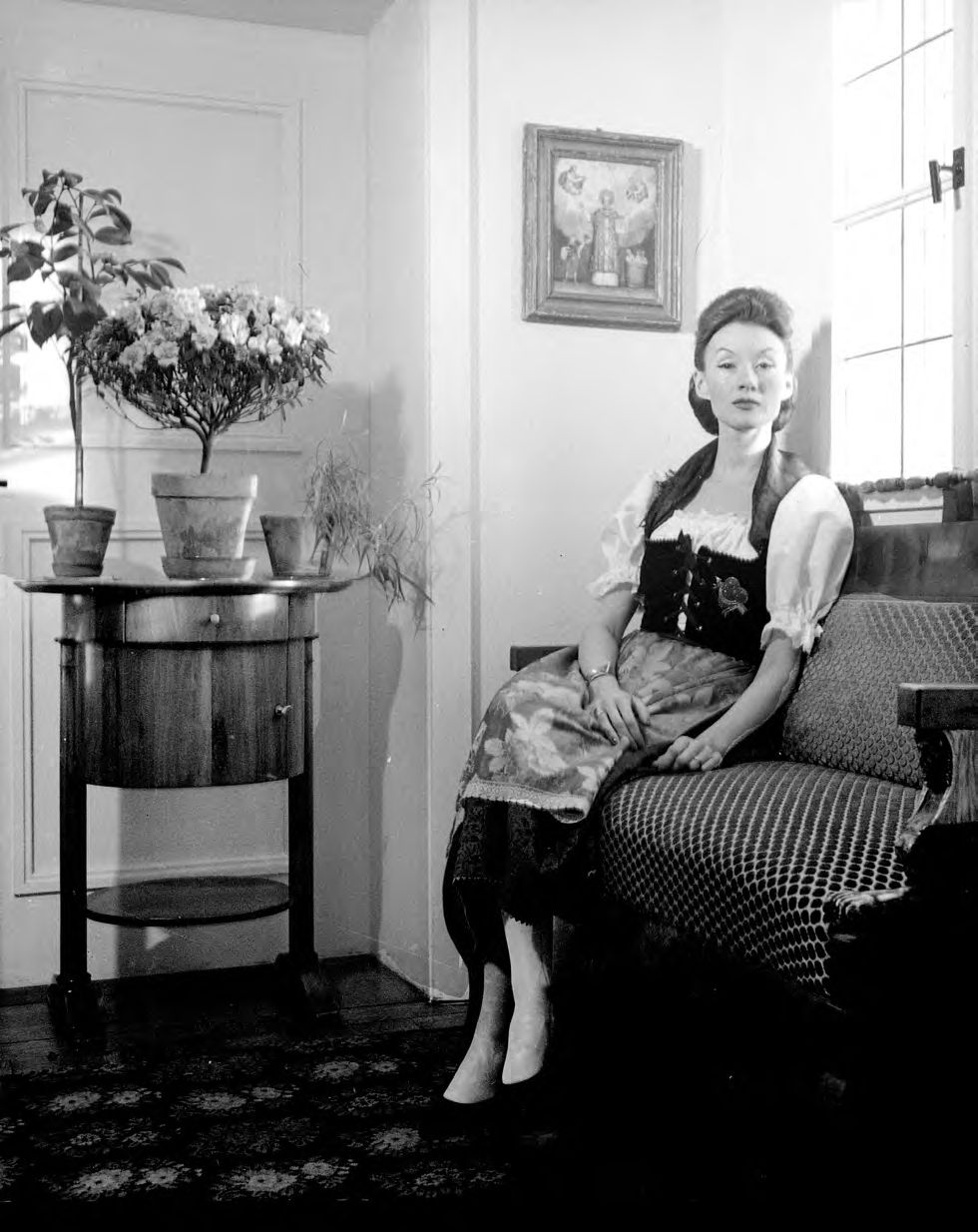
Millicent Rogers in Tyrolean dress at her home in Austria, wearing the Flato heart brooch. Photographed by Francois Kollar, circa 1938.

Millicent Rogers, wearing the heart brooch, is pictured in this newspaper photograph with then-husband Ronald Balcolm as they appeared when the liner Statendam docked, September 15, 1939.
THE MILLICENT ROGERS HEART: A RUBY, SAPPHIRE, YELLOW DIAMOND, AND ENAMEL BROOCH BY PAUL FLATO, NEW YORK, CIRCA 1938
THE MILLICENT ROGERS HEART: A RUBY, SAPPHIRE, YELLOW DIAMOND, AND ENAMEL BROOCH BY PAUL FLATO, NEW YORK, CIRCA 1938
SOLD
A puffy heart brooch composed of rubies interspersed with red enamel beads, the heart pierced with a yellow diamond arrow draped with a sapphire banner with “verbum carro” in yellow gold script; mounted in platinum and 18-karat yellow gold, with French assay marks
- 28 calibré-cut yellow diamonds
- 39 calibré-cut sapphires
- 134 round and oval rubies
- With maker’s mark
- Measurements: 3 3/8 × 2 3/8 × 3/8 inches
Additional cataloguing
Provenance
- Millicent Rogers Balcom
Literature
- Bray, Elizabeth Irvine. Paul Flato: Jeweler to the Stars. Woodbridge, Suffolk: Antique Collectors’ Club, 2010, pp. 58–59.
- Fasel, Marion, and Penny Proddow. “Strictly Flatonic.” Departures, November/December 1995, p. 177.
- Harper’s Bazaar, March 1, 1938, p. 81.
- Vogue, January 1, 1939, p. 38.
Biography
Paul Flato was the original jeweler to the stars, catering to the crème de la crème of Hollywood. He founded his company in New York City in 1928 and opened a Los Angeles store in 1937. His figurative style, often bordering on humorous, reached its peak in the 1930s when Adolph Kleaty, George Headley, and Fulco, Duke of Verdura, designed pieces for him. Flato closed his business in 1943.
Significance
The 1930s were a time of glamour, when it was de rigueur to wear the latest fashions accessorized with the newest jewelry designs. Paul Flato created bold statement pieces that were avidly sought after by stage and screen stars as well as by society women. His whimsical style was a refreshing antidote to the rectilinear Art Deco designs. Client Millicent Rogers, heir to Standard Oil, had many ideas for jewelry design that Flato turned into inventive pieces. One such creation was the puffy heart that he fashioned into brooches and earrings. This brooch may have been the first of this series. The heart is pierced with an arrow draped with a blue ribbon with the words, “verbum carro.” In their article on Flato in Departures, Marion Fasel and Penny Proddow translated the phrase as “A word to my dear one.” The inspiration for the design and brooch may have come from a visit to South America with her Argentinean second husband, Arturo Peralta-Ramos, in the early 1930s. It is reminiscent of the South American milagros, religious folk charms.
Rogers was a well-known socialite and photographs of her were frequently featured in fashion magazines and newspaper gossip columns. In 1939 she was photographed wearing the Flato brooch while disembarking from the steamship Statendam with her third husband, Ronald Balcom, an American stockbroker (the marriage ended in divorce in 1941). She moved to Taos, New Mexico, in 1947, to live in a small adobe house and commenced collecting Native American artifacts that, after her death in 1953, became the cornerstone for the Millicent Rogers Museum.
Millicent Rogers was a style icon. She donated much of her fashion collection to the Brooklyn Museum, including dresses by Charles James, Mainbocher, Adrian, and Elsa Schiaparelli. She is the focus of a new biography by Cherie Burns, Searching for Beauty: The Life of Millicent Rogers. An important piece of American fashion history, this brooch was designed, made, and owned by legends of high style and design. It is as eye-catching today as it was when Rogers wore it in Vogue in 1939.

Millicent Rogers in Tyrolean dress at her home in Austria, wearing the Flato heart brooch. Photographed by Francois Kollar, circa 1938.

Millicent Rogers, wearing the heart brooch, is pictured in this newspaper photograph with then-husband Ronald Balcolm as they appeared when the liner Statendam docked, September 15, 1939.











